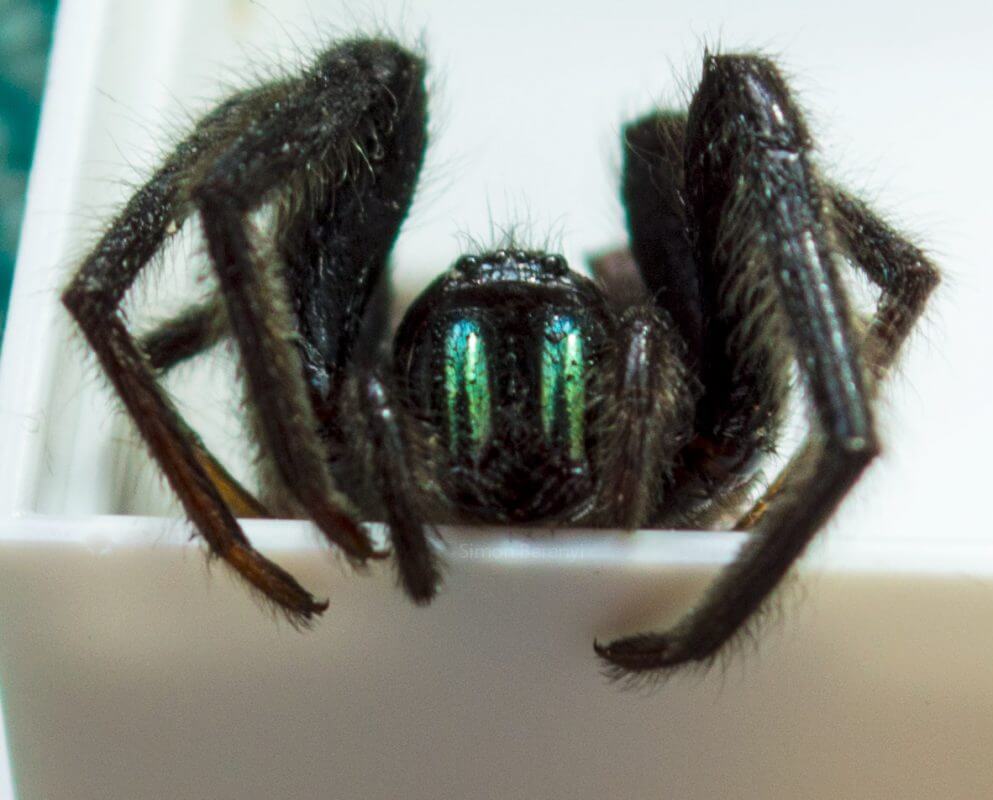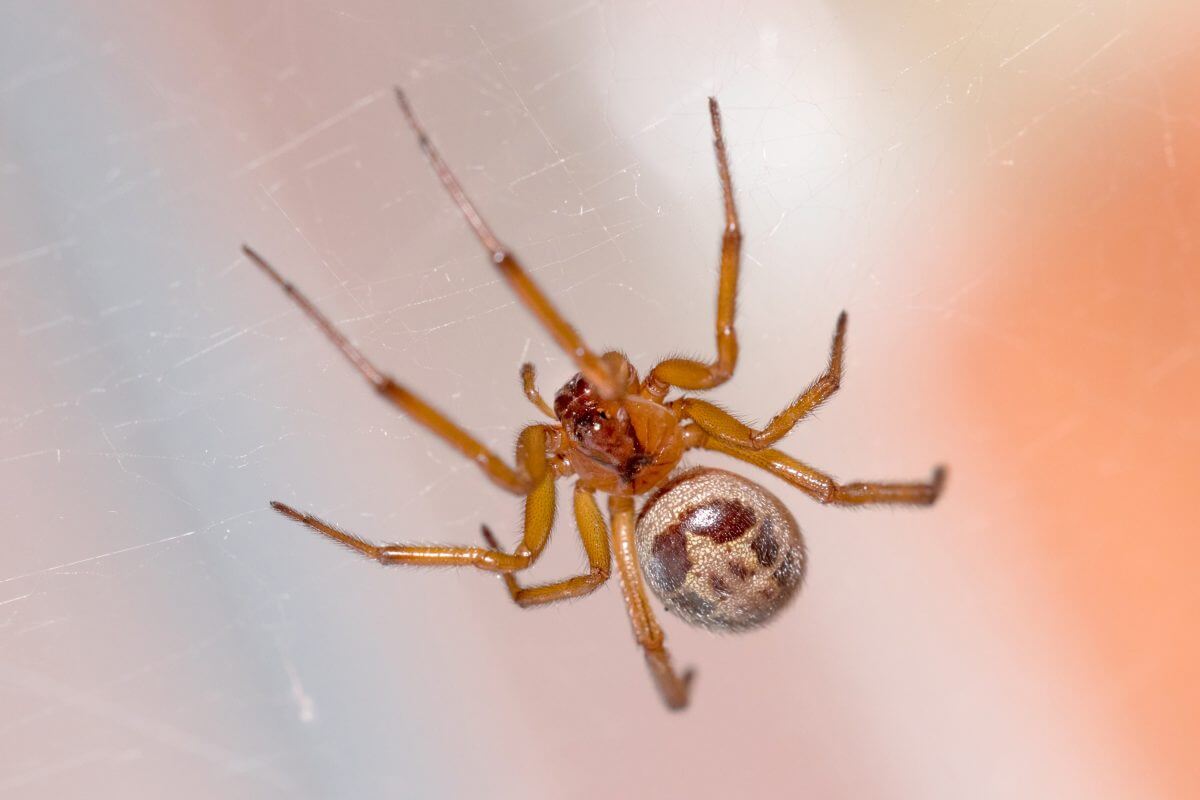Spider Bites UK
Spider Bites UK
Dangerous Spiders In The UK
Spider bites in the UK are common, but a small number of native spiders – the tube web spider & false widow spider – inflict a nasty bite. Spider bites occur when the spiders’ fangs (attached to the chelicerae) penetrate the skin.
Bites leave behind bilateral puncture marks and the victim may show signs and symptoms that include swelling, redness, infection, nausea, sweating and dizziness.
We could spin you a narrative that reflects many peoples’ opinions on the web, that these spiders pose zero danger to you and that they don’t bite.
Unfortunately, the body of research available on these spiders clearly demonstrates that spider bites in the UK do occur and with mild to severe symptoms.
However, we’ve seen no evidence of spiders in the UK causing deaths, but you might know something we don’t? Let us know.
The Most Common Biting Spiders In The UK
Tube Web Spiders ( Segestria sp.) and the False Widow Spiders ( Steatoda sp.) are among the most common biting spiders in the UK. Strangely these two spider species originated beyond our shores so could be described as non-native!
The fauna and flora of the British Isles contain countless examples of animals and plants that would have been considered invasive species at some point in their history.
Unfortunately, many of the spiders blamed for biting humans and pets never get identified. Many experts we speak to agree that Misidentification used to be a big problem. Today, the online resources now available are making identification much easier, but it’s still not perfect.
Safely collecting a spider for ID after it has just bitten you will undoubtedly be challenging. From experience, we know that most arachnids get squashed beyond recognition within seconds of biting.
Early and appropriate first aid for spider bites is vital, especially for people with a known allergy or anaphylactic susceptibility to bites from spiders.
Tube Web Spiders ( Segestria florentina )
Segestria florentina was first described by the Italian scientist Pietro Rossi in 1790. Pietro was born in Florence in 1738 and went on to become the world first professor of entomology in 1801.

Three well-known species of tube web spider live in the UK, and Segestria florentina is among them. This spider is powerful, robust and looks quite menacing.
A distinctive feature of this spiders anatomy is the green colouration of the chelicerae or front palps that house the fangs. It’s not known what benefits this colouration has for the spider, but one idea might be that it attracts prey. It is not regarded as useful in mating.
During the day, you rarely see these spiders because they are predominantly nocturnal. At night you can use a torch to look at tubes of web around doorframes, window frames, ventilation bricks, etc.
The spiders become more common indoors as the winter temperatures begin to bite, from October onwards. Houses with exposed wooden floorboards seem to be especially prone to inviting spiders into warm, occupied rooms!
These spiders are very efficient hunters, so although scary to look at, they make lovely house guests if you have pests of other kinds wandering through, under or within your house.
How Dangerous Are UK Tube Web Spiders?
Segestria florenitina has poor vision, so relies on vibrations and acoustic signals to identify when prey is touching one of the tubes trigger hairs.
Because the spider has poor vision it can’t tell the difference between a threat and a meal, so anyone disturbing this species is likely to get bitten.
Bites are painful but not severe. However, some reports suggest that blistering may occur with numbness and moderate to severe swelling.
One confirmed bite that we witnessed resulted in nothing more than a painful but intensely itchy bite site, so as with all bites and stings, it depends on how susceptible the victim is to the venom.
Noble False Widow Spider ( Steatoda nobilis )
Noble false widow spiders have become the best known and best-reported species of biting spider in the UK. This species is described as a European combfoot spider, commonly encountered in the southern half of the British Isles. It was first recorded by the Swedish arachnologist Tord Thorell in 1875.

It’s thought the species originated in the Canary Islands, Madeira or the Azores and hitched a ride on cargo ships travelling to southern ports. Indeed, the southern climate is more conducive to these spiders based on their southerly distribution.
The UK has several species that are well documented and studied, but the Noble False Widow appears to cause the majority of severe bites. It also attracts media coverage to rival its more dangerous relative, the Black Widow.
Below is the real Black Widow with a distinctive red hourglass shape on its underside. Occasionally these spiders show up in imported produce from overseas, but there are no recorded populations of the in the UK.
How Dangerous Are False Widow Spiders
It won’t take long to find a self-certified spider guru telling you that spider bites in the UK are a myth, they don’t bite, won’t bite or reactions to bites get exaggerated.
Reactions to bites from this species are called steatodism. The very fact that their bites have a formal term tells you not to be complacent.
Our advice is to take any bite (envenomation) seriously until you are confident no severe reaction is developing. False widow spiders have venom containing α-Latrotoxin (α-LTX) along with other Latrodectus like toxins in smaller concentrations than the better known black widow spider. α-Latrotoxin causes neuromuscular paralysis in prey that includes small vertebrates.
Bites will be painful (7/10) and will almost always result in a small amount of localised swelling and irritation. The venom in these spiders could cause significant reactions in some people so as already mentioned, stay vigilant and monitor the severity and range of the swelling. Bites from this species are described as of moderate medical importance.
Taking photos of bites is an excellent way to record reactions to bites accurately. drawing a line around the bite site also shows if the reaction is spreading further into surrounding tissues or up and long a limb.
Bite complications in humans have involved an unlikely partner of the spider. The spiders carry either on their bodies or in their venom a number of multi-drug resistant strains of bacteria. This has caused the UK’s only case of arachnidism – systemic poisoning from a spider bite.
Treatments include analgesics to help with pain, antibiotics to tackle bacterial infection and antihistamines to subdue any allergic reaction.
Localised necrosis or tissue death is a rare side effect but common symptoms that include pain, itching, lethargy and inflammation could last several days.
Get Rid Of Biting Spiders
Spiders like all animals will attempt to defend themselves if disturbed, so leaving spiders to do their own thing makes perfect sense.
Segestria florentina and the Noble false widow fall into the category of wildlife described as synanthropic. The term synanthropic describes animals which benefit from a close association with humans. Warm homes in the cold of winter offer huge survival benefits!
So we established that spiders love our homes and outbuildings, but how do we exclude or deter them? We start with their food and how these spiders get into your house.
Removing the insects’ the spiders prey on reduces the likelihood of excessive spider activity in your home. Woodlice , cluster flies, silverfish, ground beetles and carpet moths all make for a super spider sized snack.
Achieving spider blitzing results requires a vacuum and some intensive housekeeping in those hard to reach areas! A well-managed clutter clean together with better storage is also going to make peoples homes less resource-rich to spiders.
Outside you should get to grips with some frame sealant or filler foam. Focus on the gaps around doors, windows, wall fixtures, and defects in brickwork, rendering and cladding. Reducing the number of entry points and potential sites for new spider webs is essential.
Ventilation bricks should also be covered with mesh covers to prevent easy entry to the wall and floor cavities.
Doors should be fitted with draught excluder strip to prevent ingress under external facing doors.
There is almost no guaranteed way of preventing spiders from accessing your property because they can climb where you can’t. Each of the steps described above reduces human conflict with spiders for the most ethical results.
Preventing Spider Bites
If you plan to empty rooms or storage areas where the spiders are present, wear gloves to protect your hands.
Drain inspection chambers also carry biting spiders. Lifting the lid on these and other similar sites with gloves make a bite less likely. If you have been bitten by a spider we recommend you contact NHS direct or appropriate medical professionals for guidance.
Thank you for reading our article – spider bites UK, the Noble false widow and Segestria florentina. We hope it was helpful.